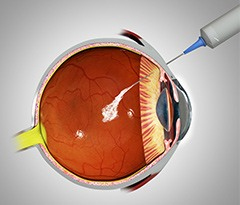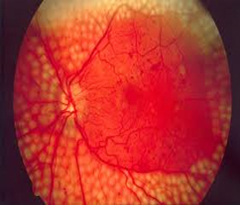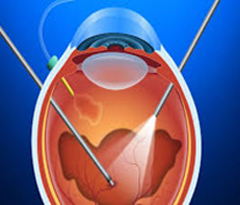Diabetic Retinopathy
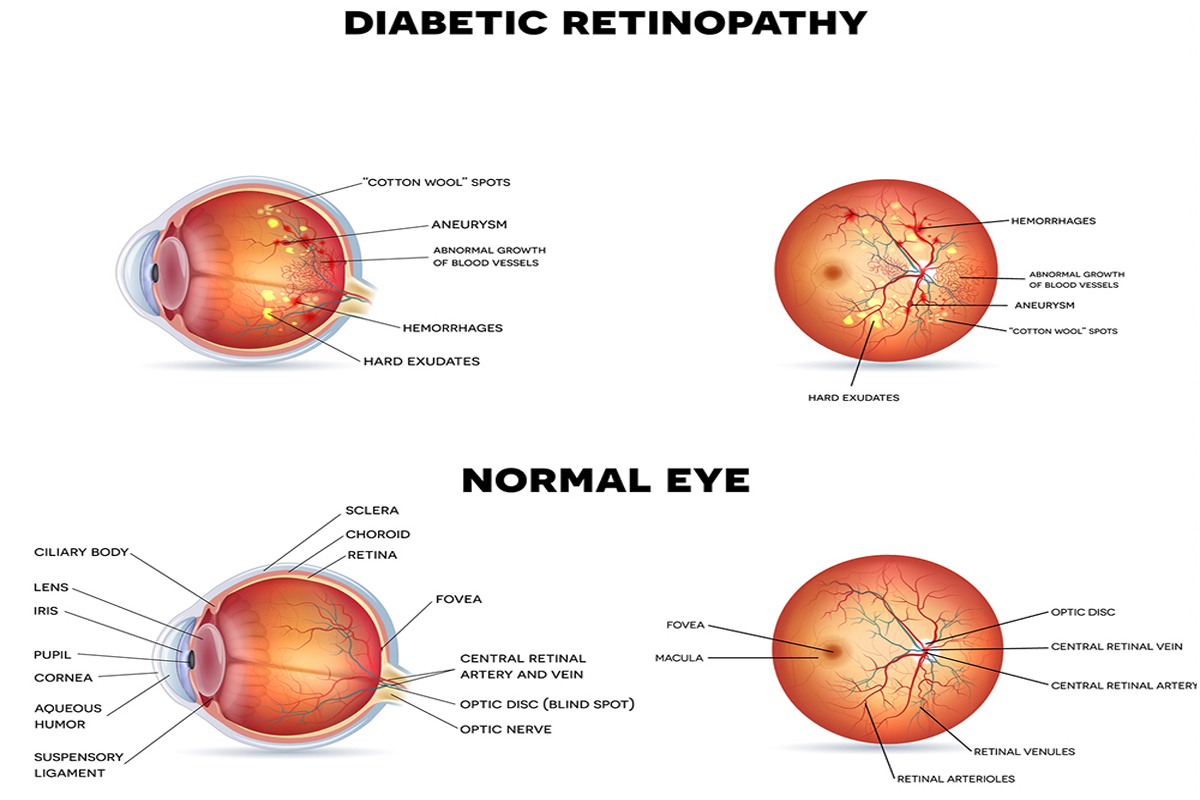
What are Diabetic Retinopathy?
Diabetic retinopathy is an eye condition that can cause vision loss and blindness in people who have diabetes. It affects blood vessels in the retina (the light-sensitive layer of tissue in the back of your eye).
If you have diabetes, it's important for you to get a comprehensive dilated eye exam at least once a year. Diabetic retinopathy may not have any symptoms at first — but finding it early can help you take steps to protect your vision.
Managing your diabetes by staying physically active, eating healthy, and taking your medicine can also help you prevent or delay vision loss.
Other types of diabetic eye Disease:
Diabetic retinopathy is the most common cause of vision loss for people with diabetes. But diabetes can also make you more likely to develop several other eye conditions:
Cataracts: Having diabetes makes you 2 to 5 times more likely to develop cataracts. It also makes you more likely to get them at a younger age.
Open-angle glaucoma: Having diabetes nearly doubles your risk of developing a type of glaucoma called open-angle glaucoma.
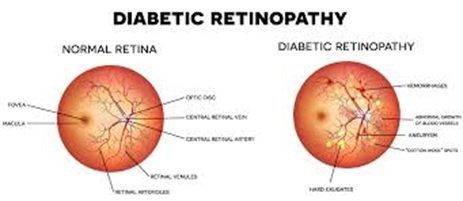

What are the symptoms of Diabetic Retinopathy?
The early stages of diabetic retinopathy usually don't have any symptoms. Some people notice changes in their vision, like trouble reading or seeing faraway objects. These changes may come and go.
Later stages of the disease, blood vessels in the retina start to bleed into the vitreous (gel-like fluid in the center of the eye). If this happens, you may see dark, floating spots or streaks that look like cobwebs. Sometimes, the spots clear up on their own but it's important to get treatment right away. Without treatment, the bleeding can happen again, get worse, or cause scarring.
What other problems can diabetic retinopathy cause?
Diabetic retinopathy can lead to other serious eye conditions:
Diabetic macular edema (DME): Over time, about half of people with diabetic retinopathy will develop DME. DME happens when blood vessels in the retina leak fluid, causing swelling in the macula (a part of the retina). If you have DME, your vision will become blurry because of the extra fluid in your macula.
Neovascular glaucoma: Diabetic retinopathy can cause abnormal blood vessels to grow out of the retina and block fluid from draining out of the eye. This causes a increase in eye pressure and result into glaucoma.
Retinal detachment: Diabetic retinopathy can cause scars to form in the back of your eye. When the scars pull your retina away from the back of your eye, it's called tractional retinal detachment.
Am I at risk for Diabetic Retinopathy?
Anyone with any kind of diabetes can get diabetic retinopathy — including people with type 1, type 2, and gestational diabetes (diabetes that can develop during pregnancy).
Your risk increases the longer you have diabetes. More than 2 in 5 Indians with diabetes have some stage of diabetic retinopathy. The good news is that you can lower your risk of developing diabetic retinopathy by controlling your diabetes.
Women with diabetes who become pregnant — or women who develop gestational diabetes — are at high risk for getting diabetic retinopathy. If you have diabetes and are pregnant, have a comprehensive dilated eye exam as soon as possible. Ask your doctor if you'll need additional eye exams during your pregnancy.
What causes Diabetic Retinopathy?
Diabetic retinopathy is caused by high blood sugar due to diabetes. Over time, having too much sugar in your blood can damage your retina — the part of your eye that detects light and sends signals to your brain through a nerve in the back of your eye (optic nerve).
Diabetes damages blood vessels all over the body. The damage to your eyes starts when sugar blocks the tiny blood vessels that go to your retina, causing them to leak fluid or bleed. To make up for these blocked blood vessels, your eyes then grow new blood vessels that don't work well. These new blood vessels can leak or bleed easily.
How will my eye doctor check for Diabetic Retinopathy?
Eye doctors can check for diabetic retinopathy as part of a dilated eye exam. The exam is simple and painless — your doctor will give you some eye drops to dilate (widen) your pupil and then check your eyes for diabetic retinopathy and other eye problems.
If you have diabetes, it's very important to get regular eye exams. If you do develop diabetic retinopathy, early treatment can stop the damage and prevent blindness.
If your eye doctor thinks you may have severe diabetic retinopathy or DME, they may do a test called a fluorescein angiogram. This test lets the doctor see pictures of the blood vessels in your retina.

